“It is early evening, midsummer in the mountains. The sun disappears behind the high granite peaks. The air cools. The snow that remains here refreezes. Wildflowers which stood boldly open in the bright day— Kalmia, Dodecatheon, Potentilla—shrink back, as the light grows pale and the air cold. The wind that has whooshed and swirled through this place all day long lies down to rest. The land is hushed. I pull on long pants, two wool shirts, a warm hat, lace up my beat-up shoes, and set out up wide granite slabs for the alpine world”.

This is an introduction to a story from US-based wilderness traveller, naturalist and writer David Gilligan. It’s a piece from the Mountain Gazette, and goes on to drill deeply into what it means to be in the mountains, about observation and purpose, truth and clarity of mind. He focuses on the experience of being in the high mountains.
“Here, now, during the crack between the light of day and the dark of night, the brash world of our normal experience yields a little bit to the sublime aspect of reality that is always there but difficult to access. The rules of probability, set by reason, give way to a mysterious sense of possibility”.
The special relationship many of us share with high places is a recurring theme on this site. We all have ‘mountains of the mind’, places that we visit to retreat, literally and mentally, the places we go to when we day dream to escape the mundane and the difficult.
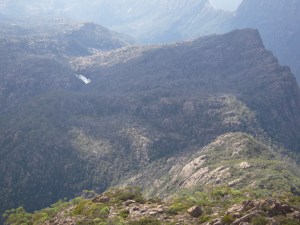
For some, that ideal place might be a perfect break on a hidden beach, or a fishing line in one hand and a beer in the other, and a clear river running past. For me it’s always been mountains. And when I think of my special places, my places of retreat, a few always come pushing through to the front of my mind: that high, elegant ridgeline that forms the backbone of Mt Bogong, the rocky summit of Geryon, and the crumpled ridges and radial drainage around Mt Howitt.

When I need a break or are day dreaming about the next trip, I find my mind drifting to mountains both long loved and those yet unclimbed. Many feel like old friends. Like human friendships I am finding that my link to special places can go deeper as the years pass. I occasionally wonder about what makes those places special to me.
I think at least part of the appeal of my special/ sacred places is to have had a long physical connection.
Viewed from Mt Stirling or The Bluff, Howitt seems wonderfully remote, squeezed in next to the Crosscut Saw. I have toiled up Howitt Spur in sun and rain, and wandered the summit in autumn snow. Once, with a big group of friends we were hammered in a lightening and hail storm, racing over the summit for the safety of Mac Springs. 25 of us squeezed into the hut, the space so cramped that 2 people had the job of tending the stoves, and hot drinks and food were passed hand over hand to hungry mouths. I have snow shoed in over The Bluff, and carried my 18 month old daughter across the Howitt Plains to introduce her to the mountain. Once, I skied all the way in from Taboritha Saddle, and as we left the Howitt Road in deep powder and insane cold, I felt like we were skiing to the very heart of the Wild. I had some wonderful long autumn walks from Sheepyard Flat to the distant head of the Howqua Valley and that long climb onto West Peak with my best friend Ewen, trips that lasted almost right until the end of his life. Personal connection is certainly part of what makes for a mountain of the mind.
Then there is charisma. Some mountains , like some people, just have It. How to define ‘special’? Its different for everyone. But for me, my three mountains all have a certain something. I have spent so many days wandering misty hillsides, just soaking up the character of Geryon and the Ducane Range, tracing the trails up to the head of Pine Valley, following boulderfields. Every time I make that walk in up Pine Valley and through the Labyrinth, I feel like I am getting a little closer to finding something real and remarkable. Something on the periphery, in the corner of my vision.
And then there is remoteness. I love Mt Stirling. It’s my weekend retreat, with an easy drive high up the mountain and then a brisk walk to the tree line. But to climb onto the southern high point of the mountain, where that high ridge that stretches all the way from Mt Cobbler to Howitt comes into view, a sense of the wild and remote rises up. As I stand on Stirling, I often wish I could fly over to Howitt. Part of what I love is that there’s no quick way in, and even the ‘old people’s route’, the Howitt Plains access, is still a big drive and reasonable wander. Part of the appeal is certainly the sense of the remote. Perhaps part of that is the ability to idealise something that is further away – be it people or place. It helps them to be something more than just another thing or person around you in your day-to-day life.
And I think sometimes there is simply love at first sight. That sense of the timeless, of seamless ease, of floating on emotion and reaction. I remember climbing for the first time up that rough rock trail to the summit of Frenchmans Cap, the whole west of Tasmania spread out below like a map. It was a revelation. A cool, pale autumn morning, the dark ribbon of the Franklin River far below, distant peaks, even the hint of ocean. Sheer, timeless amazement.
Mountains give me hope. I feel like myself in the high country, and have a deep sense of ‘rightness’ when I am there. They are places I dream of and places I go home to.
I found myself agreeing with David’s answer to his own question Why do we go to the high mountains?
“What have such places come to mean in the deep recesses of our consciousness? The answers to these questions lie in our own physical experience: the rhythmic synchronization of breath and step that it takes to ascend into the high country, the alchemy of time on the ground in motion through space, and in our mental process: the meditative trance of the summit experience, the reflections in camp or on the journey home. We respond to time in the high mountains by attaining a state that is relatively rare in the lowlands”.
You can find David’s website here.











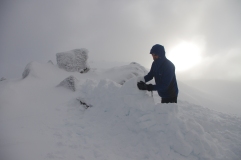













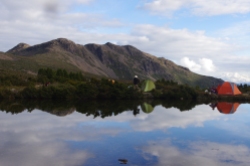


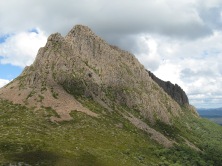






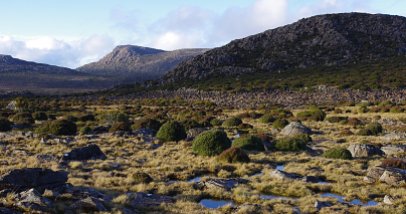



















Leave a comment